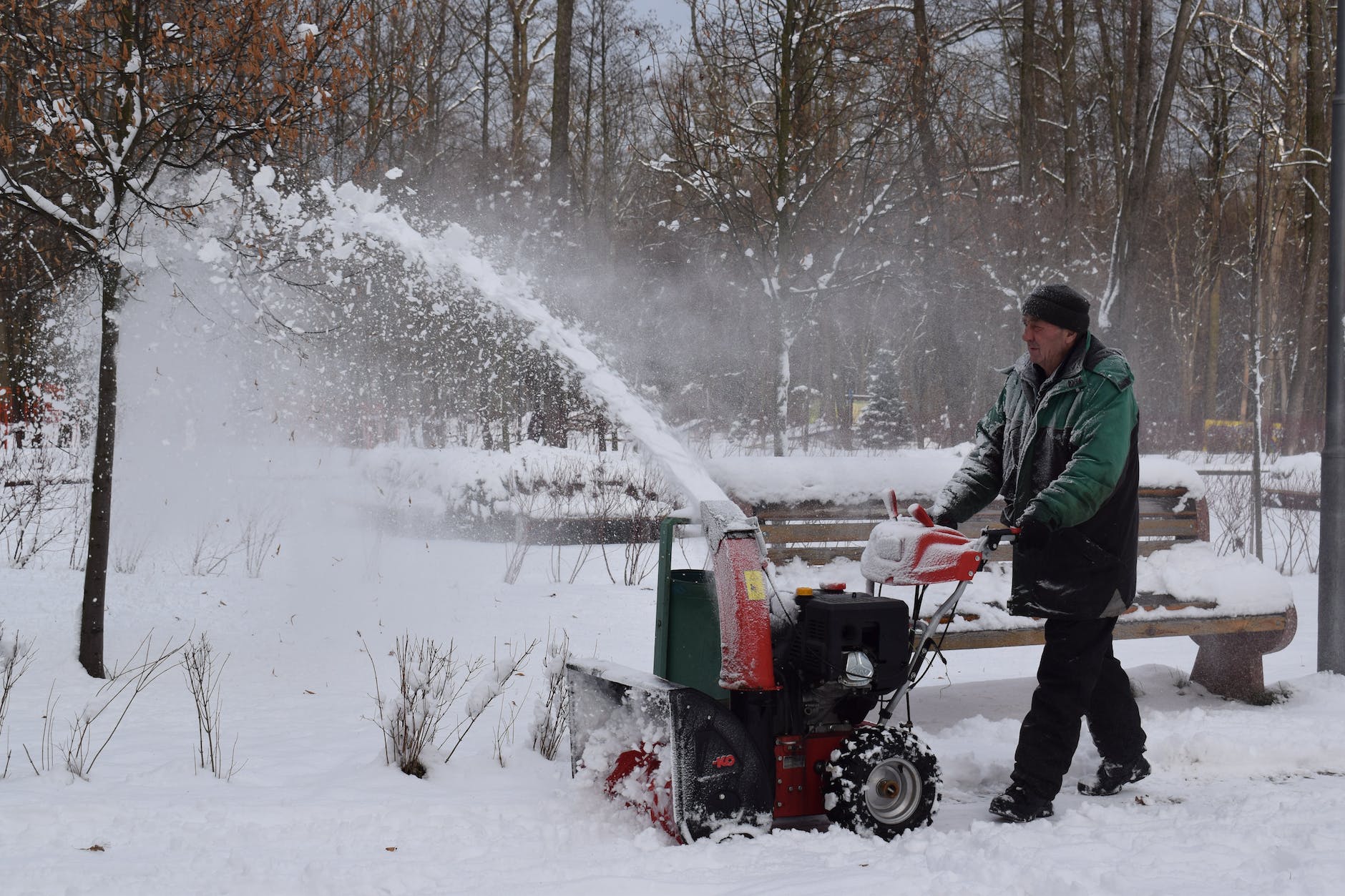You can run a snowblower with the choke on – for the short term. Prolonged use of the choke presents the risk of engine damage. Read on to find out why.
What is a Choke?
A choke is a valve in the carburetor that restricts air coming in. Since gasoline engines rely on a ratio of air and fuel to properly combust, any upset to this balance has an effect.
In the case of a cold engine, the choke helps to start the machine. When the choke is on, the air is restricted. This creates a higher ratio of fuel to air. It’s helpful to get a cold engine started.
As the machine warms up, it no longer needs that added fuel to air ratio. In fact, they’re designed with the ratio set at warm temperatures. Once it gets to temperature, we want to open the choke valve by turning off the choke.
This gets us to optimum conditions that the engine was designed to run in.
Why Is the Choke Left On?
Over time (and neglect), the jets inside the carburetor can become clogged. These jets have tiny ports, so it doesn’t take much. A bit of dirty fuel can plug it. Old gas can gel up and restrict it as well.
It might not completely block the flow of fuel, but even a small amount can upset the air/fuel mix. A restriction won’t allow the appropriate amount of fuel into the combustion chamber.
The result is a condition that is too lean. There’s too much air vs. fuel.
You know that this is the case in this scenario:
Your engine is cold and you’re going to start it, so you turn the choke on. The machine fires up easily and runs normal. As it warms up, you go to shut the choke off.
At this point, the engine will sputter and die.
That’s a classic example of exactly what we talked about – a lean condition caused by fuel restriction.
The solution for many homeowners is to simply leave the choke on because that allows the engine to stay running.
The Dangers of Running a Snowblower With the Choke On
First, the machine will be underpowered. As we talked about previously, the engine is specced to run optimally with the correct air/fuel mix. This is taking into consideration the volume of air with the choke off and the engine warm.
While it’s possible to achieve the same air/fuel mix by restricting the air intake, the machine will be underpowered because of the lack of air.
This can cause subsequent damage; the machine has to work harder which can cause it to overheat. Overheating can then cause a blown head gasket, stuck valves, etc.
Or, it might simply die frequently when working because it lacks the horsepower it was designed for.
Further Damages
Prolonged use of the choke can cause vapor lock as the conditions in the combustion chamber continue to run in a rich condition. Not all of the fuel vapors are combusted. Some of them will escape through the exhaust.
In fact, this is another tell-tale sign of a rich condition – an increased odor of gasoline. However, not all of the vapor is exhausted; some remains in the combustion chamber.
Over time, this can prevent the piston from being able to overcome the compression, and vapor lock can result.
The most worrisome damage from running a snowblower with the choke on can just about destroy the machine.
Since not all of the fuel is being combusted, some remains on top of the piston. This fuel gradually builds up and pools, looking for a place to go.
In this case, that would be past the rings and into the crankcase. Since the fuel is thinner than the oil barrier between the rings and the cylinder wall, the fuel effectively washes the oil off the cylinder wall.
Without that oil lubrication, the engine can quickly overheat and score the walls. Worse, the piston can seize to the walls or even explode within the crankcase.
As you can imagine, this is not an ideal scenario.
Recap
A choke is a vital component for starting a cold engine. That being said, it’s important to use it properly. Once the engine has warmed up, shut the choke off. If the engine dies, that should tell you that it’s time to clean the carburetor.
Don’t neglect this fact and continue to run it with the choke on. Catastrophic damage can result.
Did I forget anything? Let me know in the comments below!
As an Amazon Associate I earn from qualifying purchases.
